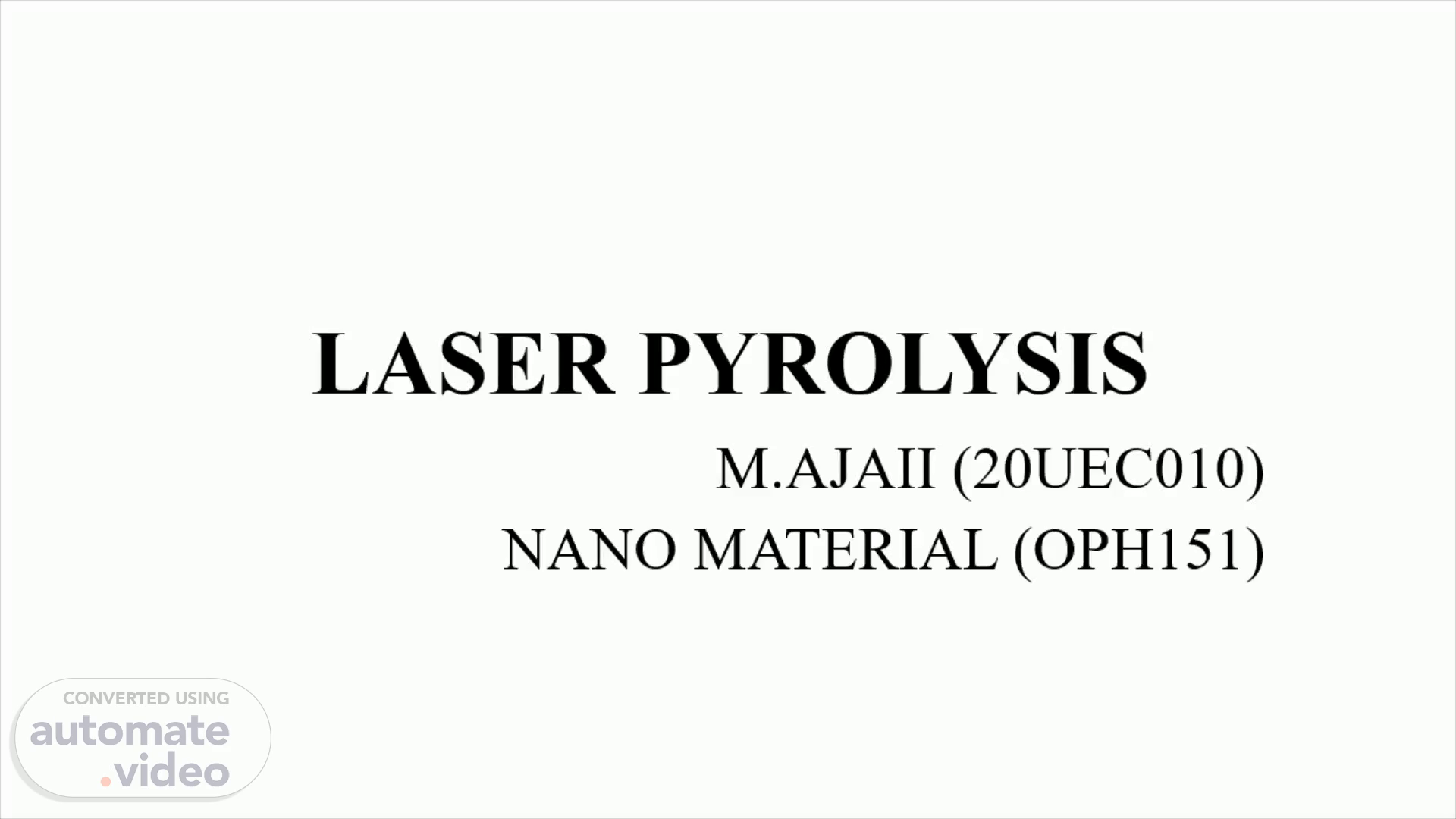Scene 1 (0s)
LASER PYROLYSIS. M.AJAII (20UEC010) NANO MATERIAL (OPH151).
Scene 2 (21s)
INTRO. The most traditional chemistry-based routes to synthesize ferrite MNPs have been mentioned earlier. More exotic processes such as gas/aerosol-phase methods will now be disclosed. These include, for example, combustion flames, plasma, spray, or laser pyrolysis..
Scene 3 (42s)
Here, a ferric saline solution is sprayed into the reactor in the presence of a reducing agent , which leads to the condensation of solid products from the gas phase, while the solvent evaporates. At the end, the particles of the dried residues end up with sizes similar to those of the original ones . The reaction can be triggered by pyrolysis (thermal decomposition), reduction, hydrolysis, disproportionation, oxidation, etc ..
Scene 4 (1m 10s)
One of the most prominent pyrolysis methods is the laser pyrolysis of organometallic precursors. In this particular case, the high-temperature atmosphere required to heat the precursors is created by absorption of laser energy, leading them to react and resulting in homogeneous nucleation . The mixture of reactant gases flows through a channel until it interacts with a continuous wave of a CO2 laser, which sets up the chemical reaction and keeps it occurring. Then, a collection system recovers and separates smaller particles from larger aggregates (solid filter) ..
Scene 5 (1m 52s)
This technique has a great flexibility on tailoring the results features and has been shown to be excellent for continuous, high, and direct production of well-dispersed MNPs .It is also a fast technique and leads to uniform shaped products, only depending on the nature of the precursors, the reagents flow rate in the pyrolysis zone, and the laser power. However, the main constraints of this method still rely on the elevated costs, the need for a specific reagent/laser resonance, and the requirement for a specific installation.
Scene 6 (2m 30s)
Several kinds of NPs have been obtained through this method. For example, Costo et al. synthesized γ-Fe2O3 MNPs for bio applications by continuous laser pyrolysis of Fe(CO)5 vapors, resulting in high crystallinity ultrasmall samples with size around 3.5 nm..
Scene 7 (2m 51s)
INDUSTIAL APPLICATION. Laser pyrolysis is another strategy developed for the synthesis of nanoscale materials. Although it is not as popular as LA, it gained certain degree of attention especially for the synthesis of carbide materials (e.g., SiC , TiC , ZrC ) and ceramic nanoparticles (e.g., TiO2, SiO2) ..
Scene 8 (3m 12s)
In a typical laser pyrolysis process , the gaseous-phase precursors are introduced to a chamber by a carrier gas (e.g., argon) where the gaseous-phase precursors meet the laser beam. The high-power laser beam (e.g., 2400 W) generates elevated localized temperatures which trigger the nucleation and growth of nanoparticles. The nanoparticles are then collected by a catcher equipped with a filter..
Scene 9 (3m 35s)
The laser pyrolysis is characterized as a gaseous-phase process, which does not mean liquids reactants are not allowed. Where liquid reactants are necessary, those reactants can be vaporized or turned into microscale droplets (e.g., via an ultra-sonication process) thereby they can be introduced to the reaction chamber. Since this technique mainly applied the thermal energy induced by high-power lasers, lasers (e.g., CO2) operate in continuous modes are often applied..
Scene 10 (4m 6s)
CONCLUSION. In conclusion, the study showed that laser pyrolysis is a consolidated technology within its main application fields (nanoparticles and coatings) for several years. Within this context, the technology has been developed on very different sizes and processes, obtaining a very wide range of results..
Scene 11 (4m 26s)
THANK YOU.
